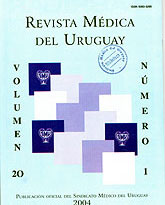Consideraciones generales sobre el mercurio, el timerosal, y su uso en vacunas pediátricas
Palabras clave:
TIMEROSAL, MERCURIO, VACUNAS SINTÉTICASResumen
El timerosal, derivado del mercurio, ha sido utilizado en medicina por sus propiedades antisépticas. Desde hace más de 60 años ha sido usado como conservante en vacunas para evitar el sobrecrecimiento bacteriano, especialmente en frascos multidosis. Sin embargo, desde fines de la década de 1990 su uso ha sido cuestionado en Estados Unidos y Europa por el riesgo teórico de exposición en niños pequeños, con sus potenciales efectos en el desarrollo neurológico. Este cuestionamiento motivó a organizaciones internacionales, gubernamentales y no gubernamentales, entre ellas a grupos de asesores de la Organización Mundial de la Salud, desde el año 2001, a revisar la información disponible hasta la fecha. Estos grupos de expertos concluyeron que actualmente no existe evidencia del daño por exposición al mercurio en niños y adultos que reciben vacunas con timerosal y, en consecuencia, no existe razón para cambiar las actuales prácticas de inmunización con vacunas que contienen timerosal.
Citas
2) Mark Smith C. Mercury in Massachussets: An evaluation of sources, emissions, impacts and control. Massachussets Department of Environmental Protection (MADEP). Office of Research and standard. Aug 8, 1996. http://www.testfoundation.org/thimerosal.htm [Consulta: 11 octubre 2001, 14 febrero 2003].
3) Klaassen C. Metales pesados y antagonistas de los metales pesados. In: Goodman A, Rall T, Niess A, Taylor P. eds. Las bases farmacológicas de la terapéutica. 8 ed. México: Médica Panamericana, 1991: 1543-6.
4) Pichichero ME, Cernichiari E, Lopreiato J, Treanor J. Mercury concentrations and metabolism in infants receiving vaccines containing thiomersal: a descriptive study. Lancet 2002; 360(9347): 1737-41.
5) Bigham M, Copes R, Srour L. Exposure to thimerosal in vaccines used in Canadian infant immunization programs, with respect to risk of neurodevelopmental disorders. Can Commun Dis Rep 2002; 28(9): 69-80.
6) Budavari S, O'Neil MJ, Smith A, Heckelman PE, Kinneary J. The Merck Index. 12 ed. New Jersey: Merck 1996: 1590.
7) Martindale. The extra pharmacopoeia. 30 ed. London: The Pharmaceutical Press, 1993: 804.
8) Valeri A. Thiomersal nei vaccini: il meccanismo del danno. http://www.vaccinetwork.org/archivio/thimerosal/2001/integrazesposto.html. [Consulta: 17 febrero 2003].
9) Ball LK, Ball R, Pratt D. Review article: An assessment of thimerosal use in childhood vaccines. Pediatrics 2001; 107(5): 1147-54.
10) Institute of Medicine (USA). Timerosal-containing vaccines and neurodevelopmental disorders. Institute of Medicine. USA. http://www.iom.edu/IOM/IOMHome.nsf/ [Consulta: 7 agosto 2001].
11) The National Academy of Sciences. EPA's Methylmercury guideline is scientifically justifiable for protecting most Americans, but some may be at risk. http://www4.nationalacademies.org/news.nsf/ [Consulta: 2 oct. 2001].
12) Food and Drug Administration: Center for Biologics Evaluation and Research (CBER): Thimerosal in vaccines. http://www.fda.gov/cber/vaccine/thimerosal.html [Consulta: 16 febrero 2003].
13) World Health Organization. Global Advisory Committee on Vaccine safety, 20-21 June 2002. Wkly Epidemiol Rec 2002; 77(47): 389-90.
14) Bernier RH, Frank JA, Nolan TF Jr. Abscesses complicating DPT vaccination. Am J Dis Child 1981; 135(9): 826-8.
15) Simon PA, Chen RT, Elliot JA, Schwartz B. Outbreak of pyogenic abscesses after diphteria and tetanus toxoids and pertussis vaccinnation. Pediatr Infect Dis J 1993; 12(5): 368-71.
16) National Network for Immunization Information: Mercury in vaccines: What we know. http://www.immunizationinfo.org/features/index.cfm? ID=34 [Consulta: 2 octubre 2001].
17) Goncalo M, Figueredo A, Goncalo S. Hypersensibility to thimerosal: the sensitizing moiety. Contact dermatitis 1996; 34(3): 201-3.
18) Stajich GV, López GP, Harry SW, Sexson WR. Iatrogenic exposure to mercury after hepatitis B vaccination in preterm infants. J Pediatr 2000; 136(5): 679-81.
19) NEWSRx: Childhood Immunization: Mercury in vaccines is at safe levels. Vaccine Weekly. January 1st, 2003. http://www.NewsRx.com [Consulta: 1 febrero 2003].
20) Food and Drug Administration (FDA). Center for Drugs Evaluation and Research (CDER): Mercury compounds in drugs and food. http://www.fda.gov/cder/fdama/mercuryreport.htm [Consulta: 14 febrero 2003].
21) The European Agency for the Evaluation of Medicinal Products (Emea): Public Statement on thiomersal containing medicinal products. London, 8 July, 1999 Doc Ref: EMEA/20962/99. http://www.emea.eu.int/pdfs/human/press/pus/2096299EN.pdf [Consulta: 17 setiembre 2003].
22) Control Disease Center (CDC). Notice to readers: thimerosal in vaccines: a Joint Statement of the American Academy of Pediatrics and the Public Health Service. MMWR 1999; 48(26): 563-5.
23) American Academy of Family Physicians. Thimerosal in vaccines. Joint statement of the AAFP, the American Academy of Pediatrics (AAP), the Advisory Committee on Ommunization practices (ACIP) and the United States Public Health Service (PHS). http://www.aafp.org/x1566.xml [Consulta: 15 febrero 2003].
24) Control Disease Center (CDC). Recommendations Regarding the use of vaccines that contain thimerosal as a preservative. MMWR 1999; 48(43): 996-8.
25) World Health Organization. Thiomersal as a vaccine preservative. Wkly Epidemiol Rec 2000; 75(14): 12-6.
26) The European Agency for the Evaluation of Medicinal Products (EMEA). Position Statement. Recent developments concerning thiomersal in vaccines. Doc Ref: EMEA/CPMP/1578/00. http://www.emea.eu.int/pdfs/human/press/pus/157800en.pdf [Consulta: 17 setiembre 2003].
27) Food and Drug Administration (FDA). Statement by William Egan PH.D acting office director of vaccine research and review FDA Department of Health and Human Services, July 18, 2000. http://www.fda.gov/ola/2000/vaccines.html [Consulta: 24 julio 2000].
28) Control Disease Center (CDC). Timerosal & Vaccines: A new Institute of Medicine (IOM) Report. Immunization Safety Review: Thimerosal-containing vaccines and Neurodevelopmental disorders (2001). http://www.cdc.gov/nip/news/iom-thim10-1-01.htm [Consulta: 25 octubre 2001).
29) Control Disease Center (CDC). Impact of the 1999 AAP/USPHS Joint Statement on Thimerosal in Vaccines on Infant Hepatitis B Vaccination Practices. MMWR 2001; 50(6): 94-7.
30) World Health Organization. Vaccines and Biologicals: Recommendations from the Strategic Advisory Group of Experts. Wkly Epidemiol Rec 2002; 77(37): 305-6.
31) World Health Organization. Global Advisory Committee on Vaccine Safety, 20-21 June 2002. Wkly Epidemiol Rec 2002; 77(47): 389-404.
32) Clements CJ, Ball LK, Ball R, Pratt D. Thiomersal in vaccines. Lancet. 2000; 355(9211): 1279-80.
33) Pless R, Risher JF. Mercury, infant neurodevelopment, and vaccination. J Pediatr 2000; 136(5): 571-3.
34) World Health Organization. Policy Statement: The use of opened multi-dose vials of vaccine in subsequent immunization sessions. WHO/V&B/00.09.Geneva: WHO, 2000.












